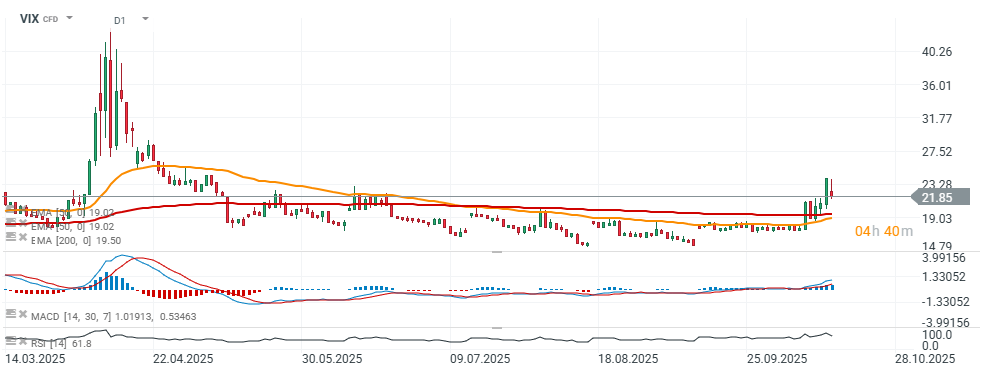- VIX falls almost 10% amid US indices trying to recover losses
- CTAs may sell even more stocks if S&P 500 decline
- Fund managers have reduced cash and raised equity exposure
- VIX falls almost 10% amid US indices trying to recover losses
- CTAs may sell even more stocks if S&P 500 decline
- Fund managers have reduced cash and raised equity exposure
The VIX curve briefly inverted, meaning the near-term VIX was higher than futures — a sign traders see short-term uncertainty outweighing long-term risks.
-
Such inversions are rare and often coincide with market stress, but this one is described as mild, not panic-driven.
-
The VIX spot index jumped to around 24, the highest since the last tariff-driven sell-off in April, before stabilizing.
-
Analysts say this move shows that speculative excess has been flushed out, not that a crisis is brewing.
-
Susquehanna Group sees the inversion as a temporary reaction — traders expect turbulence but are not panicking.
-
Historically, most market bottoms happen during VIX backwardation, but those cases usually follow larger S&P 500 corrections (5%+) — unlike the mild pullback now.
-
Analysts caution that if the VIX fell back near 14, it would indicate dangerous complacency returning to the market.
-
Fund managers have reduced cash and raised equity exposure, which could limit buying power on future dips.
-
Commodity trading advisers (CTAs) have limited upside buying potential left, but could sell heavily (up to $46 billion) if the S&P 500 drops another few percent.
-
Overall sentiment: volatility likely to stay elevated, reflecting a market balancing optimism with caution after the tariff-related shock.

Source: xStation5
Daily Summary: Wall Street ends the week with a calm gain 🗽 Cryptocurrencies slide
NATGAS surges 5% reaching 3-year high 🔎
Bitcoin loses 3% 📉Technical bearish flag pattern?
3 markets to watch next week (05.12.2025)


